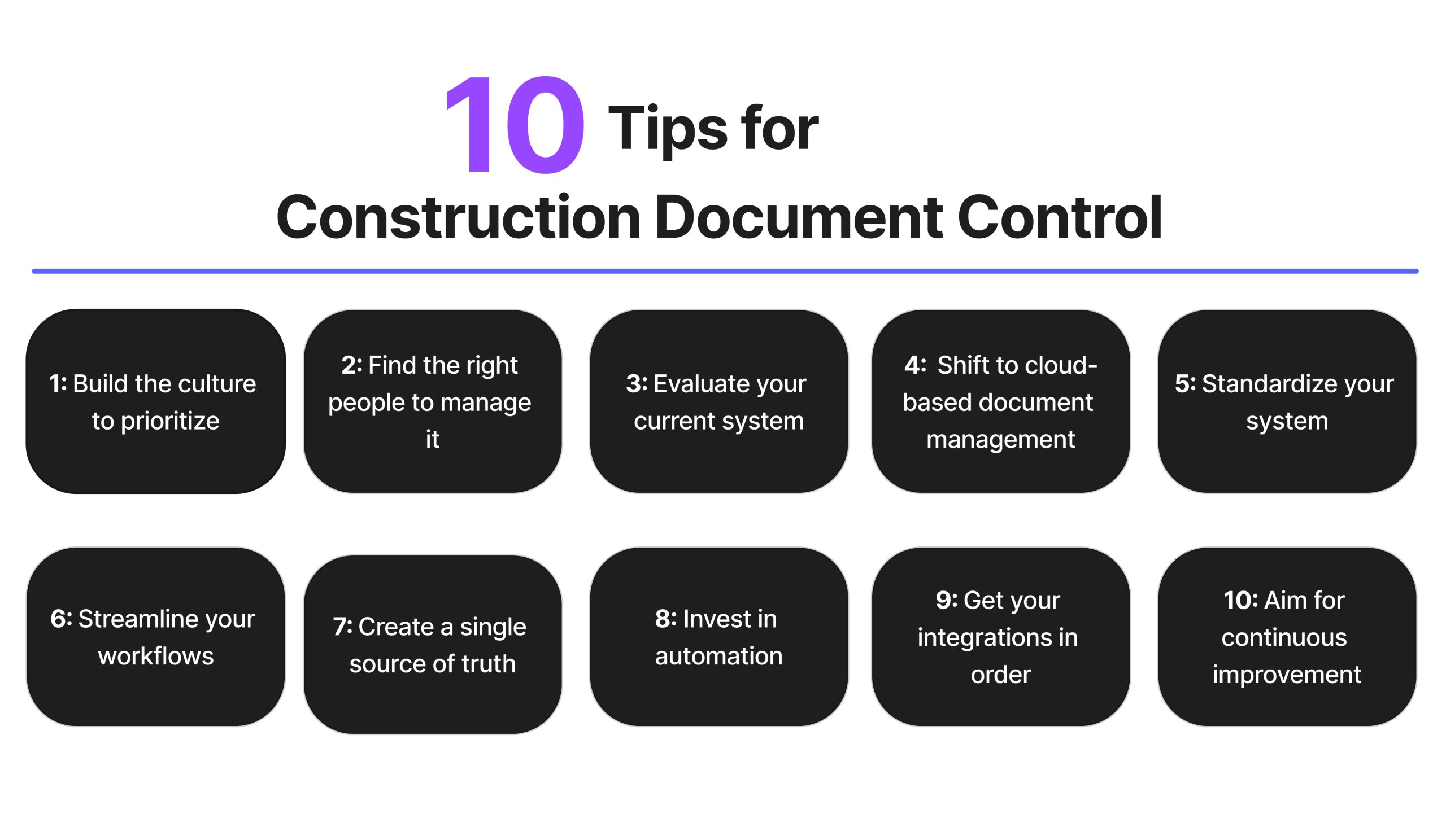Opening Effectiveness: The Advantages of Construction Document Management Platforms
Opening Effectiveness: The Advantages of Construction Document Management Platforms
Blog Article
Optimizing Job Collaboration: Designer's Ideal Practices in Building And Construction File Management
In the intricate world of building tasks, the reliable monitoring of construction files stands as a foundation for success. Engineers, with their meticulous interest to information and ingenious layout options, are charged with coordinating a harmony of stakeholders, sources, and timelines. Nonetheless, among this complexity exists a crucial inquiry: how can designers streamline partnership procedures to improve task results? By discovering crucial methods such as leveraging cloud-based platforms, developing robust communication protocols, and guaranteeing information safety and security, designers can boost their file management techniques to brand-new elevations.
Leveraging Cloud-Based Systems
Leveraging cloud-based platforms is an essential technique for modern-day designers in maximizing building file monitoring processes. By transitioning from traditional paper-based systems to shadow solutions, engineers can simplify partnership, improve file access, and improve total job effectiveness. Cloud-based systems supply architects the capability to store, share, and update construction documents in real-time, making certain that all group members have access to one of the most present details no matter of their location. This availability advertises seamless communication and coordination amongst job stakeholders, leading to fewer mistakes and hold-ups in the construction process.
In addition, cloud-based systems give a protected setting for keeping sensitive job details, providing security, regular backups, and user permission settings to protect information stability. Designers can additionally gain from the scalability of cloud services, permitting them to readjust storage space capacity and functionality based upon job requirements. In general, leveraging cloud-based systems encourages architects to optimize their building and construction file administration processes, driving better partnership, effectiveness, and success in their jobs.
Implementing Variation Control Equipment
Having established the benefits of cloud-based systems in building file administration, engineers can now boost their document control processes by implementing Variation Control Equipment. Version Control Systems (VCS) are important devices that track modifications in papers, ensuring that group participants are constantly dealing with the current and most exact details. By applying VCS, designers can maintain a central database where all task files are saved, enabling smooth partnership while reducing the danger of mistakes and version problems.
One trick advantage of Version Control Equipment is the capability to track the complete history of file modifications, permitting users to go back to previous variations if required (construction document management). This function is particularly useful in building projects where design iterations and adjustments prevail. VCS promotes much better interaction amongst team members by giving a clear audit route of who made particular modifications and when they were made. This openness not only improves accountability but also helps in resolving conflicts or inconsistencies that might develop during the job lifecycle.
Developing Interaction Protocols
To ensure effective and effective task coordination, engineers need to establish clear and durable interaction procedures within their building and construction record monitoring procedures. This platform could be a task monitoring software program, e-mail threads, or cloud-based storage space remedies.
Furthermore, communication protocols ought browse around this site to likewise include standards on just how to take care of problems, modification orders, and immediate problems that might arise throughout the job lifecycle. Developing a structured strategy to interaction guarantees that all stakeholders are on the same page, promotes transparency, and eventually contributes to the effective completion of the construction project.
Using BIM Software Program for Sychronisation
BIM software program plays an essential duty in improving control amongst task team participants in the construction industry. Building Info Modeling (BIM) assists in cooperation by supplying a centralized platform where architects, designers, service providers, and other stakeholders can interact in a coordinated way. Via BIM software application, job individuals can access and update a shared model that includes in-depth info regarding the building style, construction components, and project timetables.

Moreover, BIM software program makes it possible for real-time partnership and interaction among employee, no matter their physical location. Via cloud-based BIM systems, project stakeholders can access the most recent task info, track adjustments, and make informed choices without delay. On the whole, Full Report leveraging BIM software for sychronisation enhances job performance, productivity, and eventually leads to successful task end results.
Ensuring Data Safety and Conformity
In the realm of construction file management, guarding data integrity and ensuring regulative compliance are extremely important considerations for architects and various other project stakeholders. Engineers need to execute durable safety steps to protect delicate project information from unapproved access or breaches.

Final Thought
To conclude, engineers can maximize task cooperation in building and construction document monitoring by leveraging cloud-based platforms, applying variation control systems, developing interaction protocols, utilizing BIM software application for coordination, and making certain information safety and security and conformity. These best methods help streamline the building procedure, improve interaction among job stakeholders, and improve performance in task shipment. By adhering to these standards, designers can effectively handle building and construction files and help with effective project results.
Via BIM software application, task individuals can access and upgrade a shared version that consists of in-depth details about the building style, building elements, and task routines.
With cloud-based BIM platforms, project stakeholders can access the latest job details, track modifications, and make educated choices quickly - construction document management. Overall, leveraging BIM software for control boosts job effectiveness, performance, and ultimately leads to successful task outcomes
In verdict, designers can maximize project collaboration in construction record administration by leveraging cloud-based platforms, applying version control systems, establishing communication methods, making use of BIM software program for sychronisation, and making certain data protection and conformity. These best techniques assist streamline the building and construction process, enhance interaction among job stakeholders, and improve performance in project distribution.
Report this page